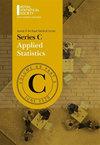有序端点的贝叶斯两阶段群序列格式
IF 1
4区 数学
Q3 STATISTICS & PROBABILITY
Journal of the Royal Statistical Society Series C-Applied Statistics
Pub Date : 2023-04-01
DOI:10.1093/jrsssc/qlad026
引用次数: 0
摘要
顺序终点在临床研究中很常见。例如,许多评估COVID-19感染治疗的临床试验采用了世界卫生组织推荐的顺序量表。尽管它们在临床研究中很重要,但顺序终点的设计方法是有限的;在实践中,为了简单起见,通常使用二分法。在这里,我们引入了一个贝叶斯群序列方案来评估有序端点,该方案考虑了比例几率(PO)模型、非比例几率(NPO)模型和PO/NPO切换模型来处理各种场景。进行了大量的模拟以证明理想的性能,并且R包BayesOrdDesign已经公开可用。本文章由计算机程序翻译,如有差异,请以英文原文为准。
A Bayesian two-stage group sequential scheme for ordinal endpoints
Ordinal endpoints are common in clinical studies. For example, many clinical trials for evaluating COVID-19 infection therapies have adopted an ordinal scale as recommended by the World Health Organization. Despite their importance in clinical studies, design methods for ordinal endpoints are limited; in practice, a dichotomized approach is often used for simplicity. Here, we introduce a Bayesian group sequential scheme to assess ordinal endpoints, which considers a proportional-odds (PO) model, a nonproportional-odds (NPO) model, and a PO/NPO-switch model to handle various scenarios. Extensive simulations are conducted to demonstrate desirable performance, and the R package BayesOrdDesign has been made publicly available.
求助全文
通过发布文献求助,成功后即可免费获取论文全文。
去求助
来源期刊
CiteScore
2.50
自引率
0.00%
发文量
76
审稿时长
>12 weeks
期刊介绍:
The Journal of the Royal Statistical Society, Series C (Applied Statistics) is a journal of international repute for statisticians both inside and outside the academic world. The journal is concerned with papers which deal with novel solutions to real life statistical problems by adapting or developing methodology, or by demonstrating the proper application of new or existing statistical methods to them. At their heart therefore the papers in the journal are motivated by examples and statistical data of all kinds. The subject-matter covers the whole range of inter-disciplinary fields, e.g. applications in agriculture, genetics, industry, medicine and the physical sciences, and papers on design issues (e.g. in relation to experiments, surveys or observational studies).
A deep understanding of statistical methodology is not necessary to appreciate the content. Although papers describing developments in statistical computing driven by practical examples are within its scope, the journal is not concerned with simply numerical illustrations or simulation studies. The emphasis of Series C is on case-studies of statistical analyses in practice.

 求助内容:
求助内容: 应助结果提醒方式:
应助结果提醒方式:


